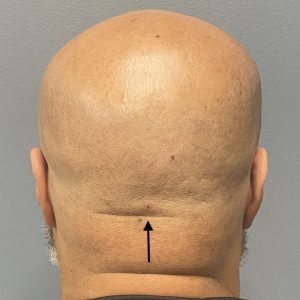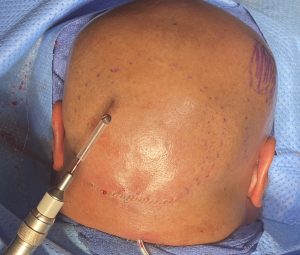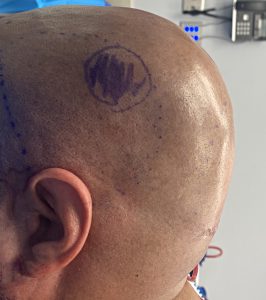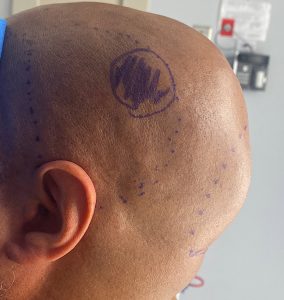Background: The occipital bone is the most posterior projection of the skull. It is a curved bone of which only its upper half is seen externally. Its lower half extends inferiorly beneath the thick neck muscles and provides the aperture for the spinal column. The upper half of the occipital bone has a superior border with the lambdoidal suture line which is significant in occipital bone protrusions or the occipital bun deformity. When the occipital bone grows excessively there is a distinct takeoff or step-off from the lambdoid suture line onto the occipital bone.
The question in occipital protrusions is whether this is due to excessive bone thickness or is it a protrusion from the push of the underlying brain with the overlying bone having normal thickness. (or is even thinner than normal) This becomes critical to know if a reduction is being planned as that question will determine whether an aesthetically visible reduction can be achieved. While in many patients the occipital bun is due to an increased bone thickness a plain lateral skull film or a 2D non-contrast scan will provide the definitive answer.
The occipital bone, like all other seven cranial bones, has a three layer composition with an outer and inner solid table of bone between which lies the thin diploic space. (cancellous bone) The occipital bone is the thickest of all the cranial bones particularly at its ridges and protuberances. This bodes favorably for a significant reduction which is done by removal of the outer table of bone down close to the diplopia space.




Case Highlights:
1) Occipital bone enlargement is one of the most common skull reduction areas requested by men.
2) The usual approach to occipital skull reduction is a horizontal incision in a high neck skin crease.
3) A guarded high speed bone burring technique is used to remove the outer cortical bone layer down next to the diploic space.
Dr. Barry Eppley
World-Renowned Plastic Surgeon





